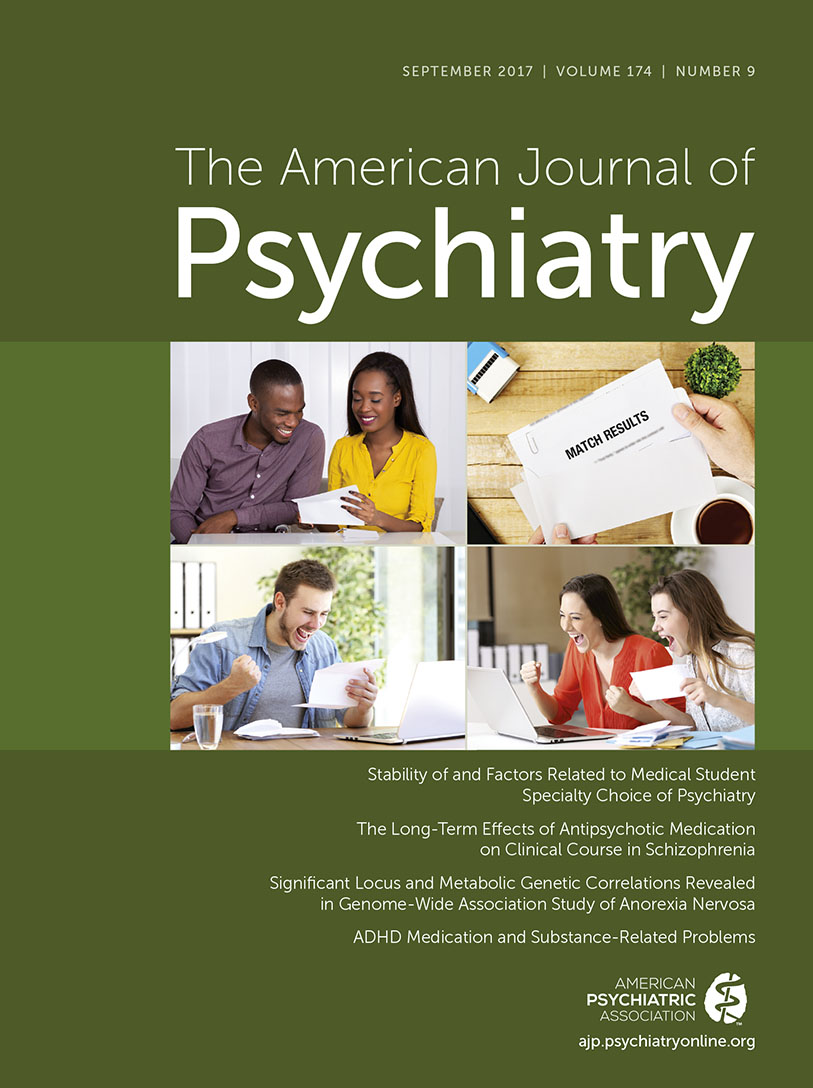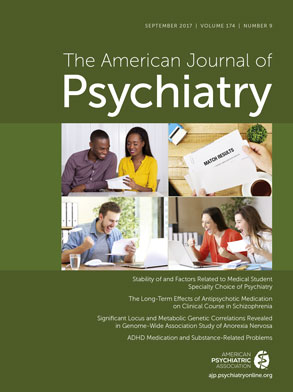Children and adults with attention deficit hyperactivity disorder (ADHD) are at increased risk of developing co-occurring substance use disorders. The reasons for this risk are manifold and likely reflect different risk pathways for different individuals. These include a propensity toward impulsive risk-taking behavior; co-occurrence of mental health and behavioral problems, such as depression and conduct disorder; psychosocial risk factors, such as school expulsions and exposure to drugs at a younger age; and self-treatment of ADHD symptoms. Concerns have also been raised that the use of stimulants in the treatment of ADHD could sensitize individuals to the rewarding effects of drugs, leading to increased risk of substance use disorders. The main evidence for the sensitization hypothesis comes from animal studies in which the sensitizing effects of amphetamine are well-established, including cross-sensitization to other drugs of abuse, such as morphine (
1). In particular, stimulants reinforce drug self-administration, and following extinction, priming with stimulants successfully reinstates drug-seeking behavior. Translating these findings to humans, the argument is that the use of methylphenidate or dexamphetamine in the treatment of ADHD could enhance the salience of the rewarding effects of drugs, leading to greater risk of substance use disorders. In contrast, by reducing the symptoms and impairments of ADHD, stimulant medications may decrease risk for substance use disorder.
To address these questions, Quinn and colleagues (
2) in this issue present data from a large pharmacoepidemiological study carried out in the United States. The authors analyzed commercial health care claims from 2,993,887 adolescent and adult patients diagnosed with ADHD to evaluate the relationship of pharmacological treatment of ADHD to events related to substance use disorders, such as emergency department visits. The study’s findings suggested a significant decline in substance use–related events during periods of treatment with ADHD medications in both males (35% reduction) and females (31% reduction), and for a period of 2 years after treatment in males (19% reduction). Importantly, there was no evidence for increased risk of problems related to substance use, and the findings were similar when conducted for stimulant treatments alone.
Although this is a very large longitudinal study, a key limitation is the reliance on observational data, without random allocation and with individual patient factors influencing selection of treatments. This means that no firm conclusions can be drawn about the role of medication. Two main strategies were adopted to minimize this problem. First, analyses were conducted using a within-individual approach, which compared periods on prescription medications for ADHD with periods off medication. This method controls for individual differences and background factors that can confound comparisons between individuals. However, it is still possible that nondrug effects play a key role. For example, patients may be more motivated to reduce substance use during periods in which they are engaged with medical treatment. The second strategy was to analyze a commonly prescribed class of antidepressants, selective serotonin reuptake inhibitors (SSRIs), as a negative control. The study found that, unlike medical treatments for ADHD, SSRIs were positively associated with an increase in substance-related events in the short term, and there was no evidence of protective effects in either the short or longer term.
The findings from this large U.S. study should be seen within the context of a growing literature on the relationship of stimulants and other drug treatments for ADHD and the risk of developing substance use disorders. A similar study design using national registry data from Sweden drew the same conclusions (
3). Investigating 26,249 men and 12,504 women with ADHD, that study found reductions in substance use–related problems (substance-related death, crime, or hospital visits) over a 3-year follow-up period. Overall, the study found 31% lower rates of substance abuse–related problems among those prescribed medication. Furthermore, it found that the longer the duration of treatment, the lower the rate of substance-related problems.
These findings from large-scale pharmacoepidemiological studies are also in line with previous investigations of smaller clinical samples. A meta-analysis conducted in 2003 of follow-up studies of children and adolescents treated with stimulants for ADHD, with a total combined data set of 674 treated and 360 untreated cases, found a 1.9-fold reduction in risk for substance use disorders in the treated group. These earlier studies found far greater protective effects in adolescents (odds ratio=5.8) than in adults (odds ratio=1.4), indicating the potential importance of delivering treatment during adolescence. Another study of 599 children and adolescents with combined-type ADHD, with an average 4.4-year follow-up, found that stimulant treatments were associated with a reduction in substance use disorders after controlling for oppositional defiant disorder and conduct disorder (hazard ratio=1.9) (
4). Overall, we conclude from this series of highly consistent findings, using both clinical and large-scale registry data, that treating children, adolescents, or adults with stimulant (and nonstimulant) medications for ADHD decreases, rather than enhances, risk for substance use disorders and related problems. This interpretation leads to the further conclusion that early recognition and treatment of ADHD plays an important role in reducing risk of developing co-occurring substance use disorders in ADHD.
More generally, the long-term benefits and risks from the use of stimulants and other medical treatments for ADHD continue to be questioned. The gold-standard approach to evaluate efficacy and effectiveness of treatments remains the use of randomized controlled trials. However, long-term outcomes are difficult to study because of ethical considerations and patient compliance for trial protocols, limiting the length of time of randomized controlled trials. As a result, only short-term effects can be investigated. Registry studies, such as the one presented in this issue by Quinn and colleagues, are therefore of great importance as they can track the outcome of drug treatments over extended periods of time. Although subject to confounding by indication, as demonstrated in this publication, the use of within-individual analyses and negative controls can minimize the effects of treatment selection.
Several other key findings, mainly using registry data from Sweden and Denmark, have reported reductions in a range of important psychosocial outcomes following ADHD drug treatments. These include: criminal convictions over a 4-year period (approximately 30%−40%) (
5), violent reoffending following release from prisons (approximately 42%) (
6), depression (approximately 20%) (
7), suicidality (approximately 18%) (
8), childhood injuries (approximately 43%) and emergency ward visits (approximately 45%) (
9), and transport accidents (approximately 58%) (
10). As for Quinn et al., the studies on criminal convictions, violent reoffending on release from prison, and suicidality used SSRIs as controls and also found no benefit from the use of SSRIs on these outcomes. Taken together, these studies provide compelling evidence for the benefits of treatment of ADHD in both adolescence and adulthood. As a result, mental health practitioners should be aware of the broader impact of untreated ADHD on functional, behavioral, and mental health problems. They should also be aware of the need for treatment and the considerable benefits, both long term as well as short term, that can derive from appropriate treatment of ADHD (
11).

